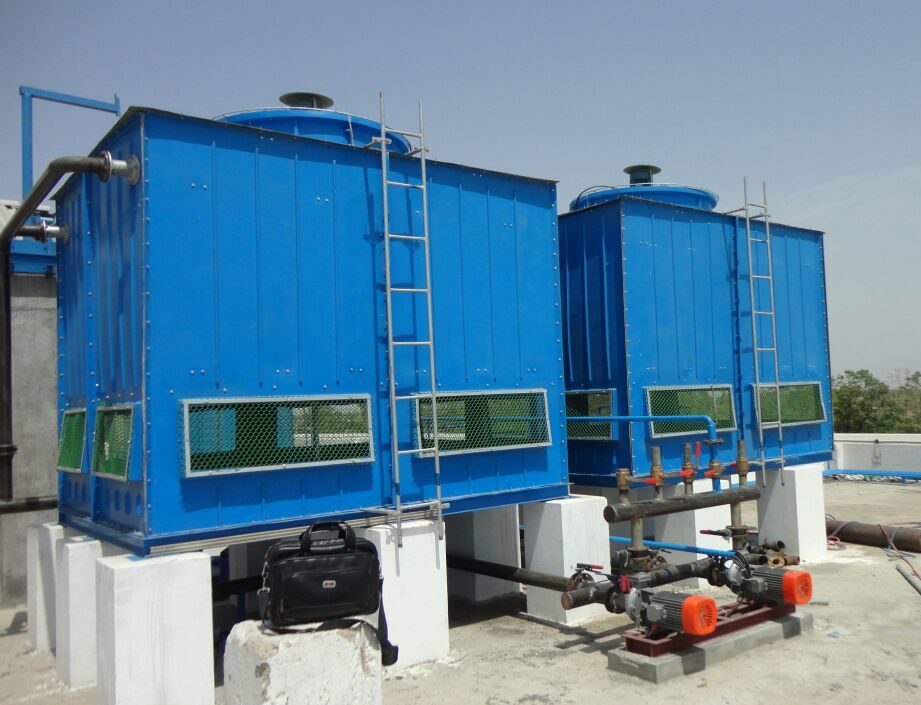Introduction
FRP cooling tower manufacturer have revolutionized industrial cooling solutions with their exceptional durability, corrosion resistance, and lightweight construction. These cooling towers are widely used in industries such as power plants, HVAC systems, chemical processing, steel manufacturing, and plastic molding. Unlike conventional metal cooling towers, FRP cooling towers offer a longer lifespan, reduced maintenance, and better resistance to harsh environmental conditions. As a leading FRP Cooling Tower Manufacturer, ensuring high-quality materials, precision engineering, and energy-efficient design is critical to delivering superior cooling performance. With advancements in resin technology, modular designs, and energy-saving components, modern FRP cooling towers are becoming more sustainable, cost-effective, and adaptable to diverse industrial needs. Manufacturers today focus on custom-engineered solutions, advanced drift eliminators, corrosion-resistant hardware, and eco-friendly designs to meet industry standards and operational requirements. In this guide, we will explore the key aspects that define a high-quality FRP cooling tower, including material composition, efficiency-driven designs, energy savings, and industry-specific applications.
Advanced FRP Material Composition
The performance of an FRP cooling tower heavily depends on the quality of materials used.
- High-Grade Resins & Fiberglass: Premium manufacturers use high-performance resins like isophthalic or vinyl ester resin to enhance resistance to chemical attacks, UV radiation, and extreme temperatures.
- Enhanced Mechanical Strength: Advanced composite materials improve the structural integrity, ensuring the tower can withstand high wind loads, vibrations, and operational stress.
- Weather-Resistant Coatings: UV-resistant gel coatings protect the FRP body from degradation due to sun exposure, moisture, and industrial pollutants, increasing its lifespan.
Custom-Engineered Solutions of FRP cooling tower manufacturer
Customization is a key factor in addressing industry-specific cooling requirements.
- Counterflow vs. Crossflow Designs: Manufacturers offer both counterflow (for higher efficiency and compact designs) and crossflow (for easier maintenance and lower pressure drop) configurations.
- Scalability & Capacity Variations: FRP cooling towers are available in capacities ranging from 5 TR to 1000+ TR, catering to small industries as well as large power plants.
- Structural Adaptability: Designed for seismic resistance, high wind tolerance (up to 150 km/h), and heavy industrial load conditions, ensuring reliability in diverse locations.
Innovative Drift Eliminators
Drift eliminators reduce water loss and environmental contamination.
- Efficient Water Retention: Advanced multi-layer PVC or PP drift eliminators minimize water droplets carried away by airflow, reducing drift loss to less than 0.001%.
- Prevention of Scaling & Contamination: Eliminators prevent scale buildup, algae growth, and airborne contaminants from entering the system, ensuring long-term efficiency.
- Low-Pressure Drop Design: Optimized for better airflow with minimal resistance, enhancing cooling efficiency without excessive energy use.
Energy-Efficient Fan and Motor Selection
Optimizing the fan and motor setup leads to significant energy savings.
- Axial Flow Fans with High Efficiency: Made from aerodynamically designed aluminum or FRP blades, axial fans provide better cooling with lower power consumption.
- IE3/IE4 Motors for Energy Savings: High-efficiency motors reduce operational costs, making them compliant with global energy standards.
- Variable Frequency Drive (VFD) Compatibility: Enables precise speed control based on cooling demand, reducing energy wastage and extending motor life.
Modular and Easy-to-Install Design
A well-designed cooling tower minimizes installation time and maintenance efforts.
- Pre-Fabricated & Modular Structure: FRP towers come in ready-to-assemble parts, ensuring quick on-site installation.
- Lightweight Components: Being 30–50% lighter than metal-based cooling towers, FRP towers reduce transportation and installation costs.
- Bolt-On Assembly: No complex welding is required, allowing easy replacement of damaged parts and faster serviceability.
Anti-Microbial and Anti-Algae Coatings
Biofouling and microbial growth can significantly reduce cooling efficiency and increase maintenance costs.
- Anti-Bacterial Resin Technology: Some manufacturers incorporate silver ion-based coatings that prevent bacteria, mold, and algae growth inside the cooling tower.
- Ideal for Clean Environments: These coatings are particularly beneficial for industries like pharmaceuticals, food processing, and HVAC, where contamination must be minimized.
Corrosion-Resistant Hardware
To enhance longevity, manufacturers use high-quality, corrosion-resistant materials for key components.
- SS 304/SS 316 Bolts & Fasteners: Stainless steel hardware prevents rusting and structural degradation.
- FRP Structural Supports: Non-metallic structural supports eliminate corrosion risks associated with metal frames.
- Epoxy-Coated Steel Components: In hybrid models, where steel is required, epoxy coatings protect against chemical and moisture-induced corrosion.
Sustainable and Eco-Friendly Design
Sustainability is a crucial factor in modern industrial cooling systems.
- Water Conservation: Advanced drift eliminators and optimized heat transfer mechanisms reduce water wastage.
- Low-Noise Fans for Environmental Compliance: Specially designed low-noise axial fans help industries meet strict noise regulations in urban and sensitive zones.
- Recyclable FRP Materials: Since FRP is non-degradable but recyclable, using reprocessed resin-based FRP helps reduce environmental impact.
Industry-Specific Applications
FRP cooling towers cater to a diverse range of industries, each requiring tailored cooling solutions.
- Power Plants: Efficient cooling for steam turbines, condensers, and generator systems.
- Steel & Metallurgy: Handles high-temperature furnace cooling while resisting corrosion from metal processing chemicals.
- HVAC & Commercial Buildings: Essential for air conditioning systems in malls, hospitals, and offices.
- Chemical & Petrochemical Industries: Provides cooling in acidic and chemically aggressive environments.
- Plastic Molding & Injection Machines: Maintains consistent cooling temperatures to improve plastic product quality.
Conclusion
FRP cooling tower manufacturer is more crucial than ever, as industries continue to demand high-performance cooling solutions that are energy-efficient, corrosion-resistant, and environmentally sustainable. By leveraging advanced FRP materials, modular construction techniques, and energy-saving fan and motor technologies, manufacturers can offer cooling towers that are long-lasting, cost-effective, and adaptable to diverse industrial applications. As industrial cooling demands evolve, continuous innovation and engineering excellence will define the future of FRP cooling tower technology. Manufacturers committed to quality, efficiency, and sustainability will play a significant role in shaping the industry and meeting the growing demands for reliable cooling solutions.

